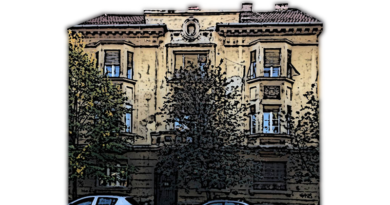DUNAVSKA 10

There are two two-storey houses at this house number, and while their facades look like pars of a single facade, the roofs clearly show that these are two separate houses.
Both of these houses have L-shaped floor plan, the left one with left yard wing and the right one with right, with one courtyard.
Its original construction date is unknown, but assumed to be early 1800s.
On the 1745 map of Novi Sad there were two rectangular-shaped houses, in their place.
The houses have sustained extensive damage in the 1849 Uprising bombing, sharing the destiny of most buildings in the city center, and the right one was reconstructed in 1851, by design of the baumeister Georg Molnar, and the left one in 1858.
The owner of the house in the second half of the 19th century was dr. Stevan Pavlovic, a lawyer and reporter, editor of the newspaper “Nase doba”

Djordje Ivkovic bought the printing office from his godfather Arsa Pajevic (Dunavska 1) in 1895. This printing office was the first one established in Novi Sad, in 1789 by Emanuel Jankovic. We can see the right house separately on the picture above, from an old newspapers add.
The owner of the left house in the second half of the 19th century was Nikola Petrovic. In the early 20th century it belonged to wealthy landowner Djoka Dundjerski.
Both houses bear the features of the Neoclassical style, that were preserved through numerous reconstructions.
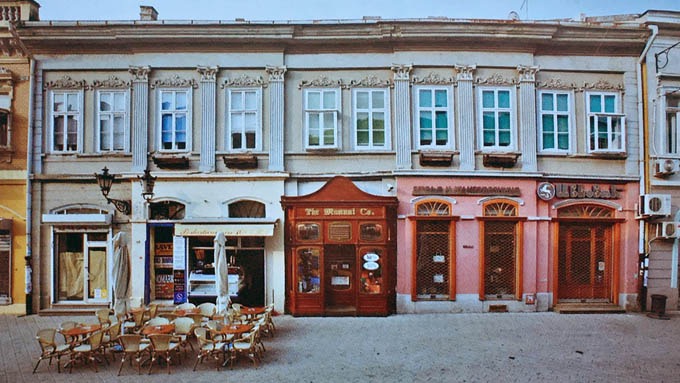
On this photo of Dunavska street taken during the Great flood od 1876, we can see that, apart from the functioning gateway, the facade didn’t change much since that time.
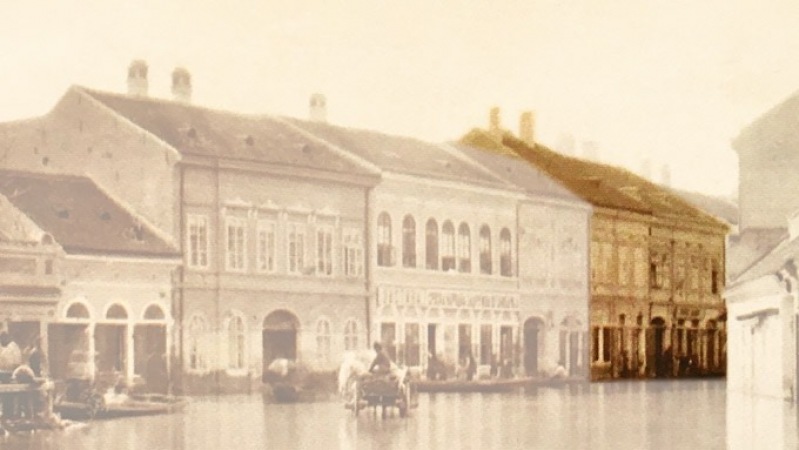
On this photo taken in 1907, we can see the details on the facade of that time.

On this photo taken at about the same time, we can see the entire house.
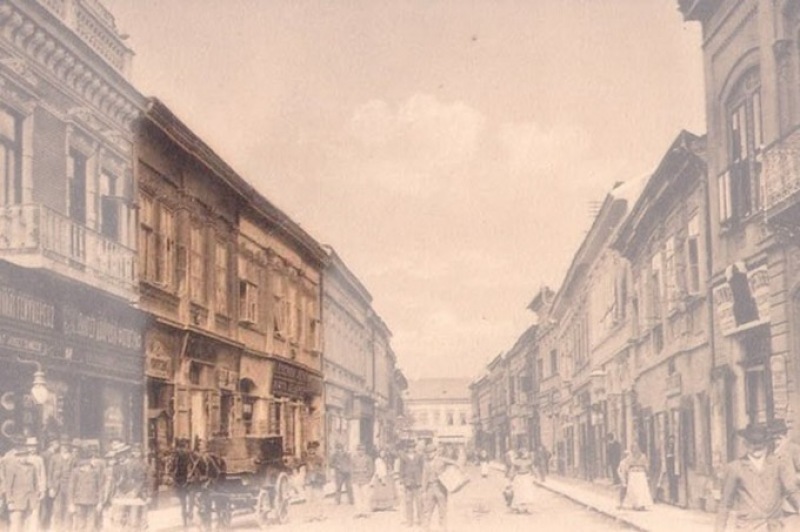
On this photo taken in 1930s, we can see that the facade didn’t change much, even the inscriptions above the shops are very similar.
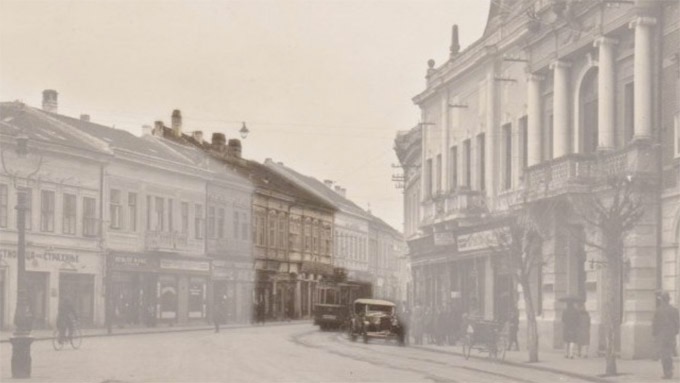
On this photo taken in 1950s we can see this house marked by a darker color.
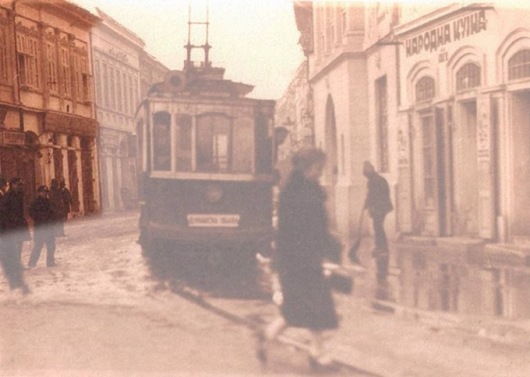
On this photo taken in 1992, we can see the façade of the house after the reconstruction in the early 1980s. The gateway was still opened at the time.
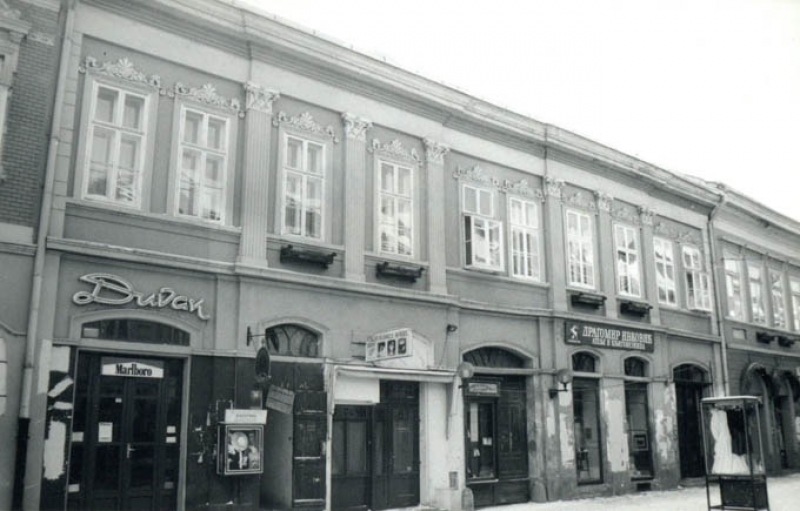
On this color photo taken in 1995, we can see no significant changes.
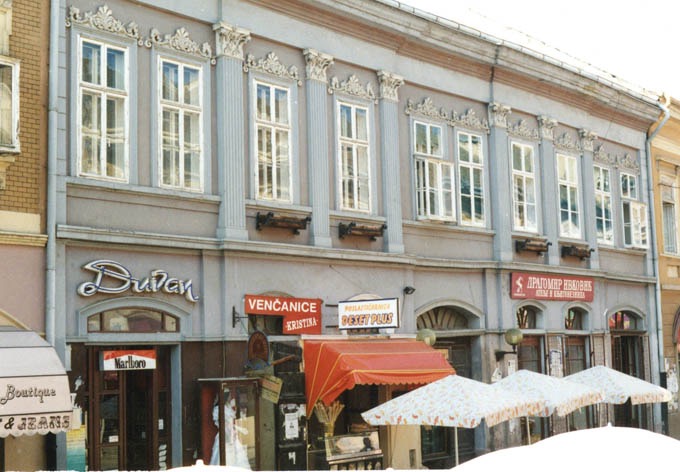
All the rooms of the shops on the ground floor are under vaults, as well as the pedestrian passage.
The courtyard facade’s most prominent feature is the communication balcony, with a wrought-iron railing, The original communication balcony was replaced with a one made of reinforced concrete.
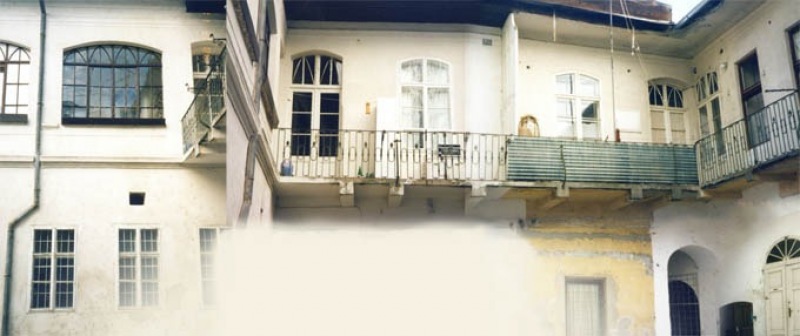
The street wing of the houses has a double-slope roof, and here we can see these are two separate houses, while the yard wings have a single-slope roof. It is covered with the original crown tiles.
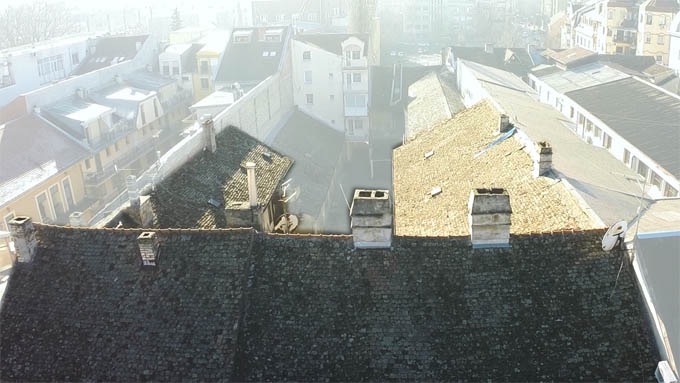

The realisation of this site was supported by the Administration for Culture of the City of Novi Sad

The sources and materials of the Institute for the Protection of Cultural Monuments of the City of Novi Sad were used for the realization of this website
The Old Core of Novi Sad was declared a cultural asset, by the decision on establishing it as a spatial cultural-historical unit – 05 no. 633-151/2008 of January 17, 2008, “Sl. gazette of the Republic of Serbia” no. 07/2008.


